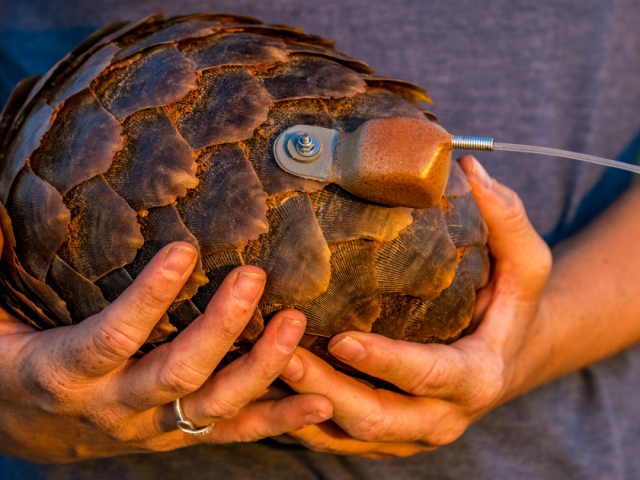In a first for the African continent, researchers at the University of Cape Town are using a cutting-edge technique to fast-track the diagnosis of disease, ensuring patients receive the correct treatment sooner.
Clinical microbiologists Professor Adrian Brink and Dr Gert Marais at UCT’s Faculty of Health Sciences have operationalised clinical metagenomics in South Africa, transforming the procedure from a complex logistical procedure to a routine test.
Clinical metagenomics fast tracks the medical diagnostic process, cutting turnover time down – from sample to result – from weeks or even months to just a few days. It can also be used as a ‘sentinel surveillance tool’ to spot new infectious diseases and sound an early warning alarm for future pandemics.
“This kind of technology has never been used in South Africa and as far as we know, the African continent. “Certainly there’s no diagnostic lab in South Africa that does it,” says Brink. He and Marais believe they are the first to develop a clinical metagenomics service in Africa.
Clinical metagenomics is the detailed analysis of all the genetic material (DNA and RNA) in samples from patients – including that of the host (in this case, the patient), and of the microbes (organisms too small to be seen by the naked eye) living within the host, like bacteria, viruses and fungi.
The genetic sequences appearing in a sample are compared to a database of all known organisms, allowing any and every pathogen present within the patient to be detected at the same time from just one sample. This metagenomic approach is sometimes referred to as “agnostic sequencing”.
By contrast, conventional diagnostic testing requires testing individually for a specific suspected disease. If the result comes back negative, a new sample will need to be taken and sent for a different test – a lengthy process when lives are at stake.
“In some cases we investigated, patients had a disease that could have been treated if it had been identified initially. But because the diagnosis could only be made months later, it was too late [to save them]. That’s where the idea for our study originated,” says Marais.
Brink recounts the case of a cancer patient who developed neurological symptoms. “Because he was highly immunocompromised, the list of potential causes for these symptoms was a page long,” says Brink.
The patient passed away, and clinical metagenomics testing of a sample taken at the autopsy revealed he was suffering from Aspergillus, an aggressive fungal infection that requires specific treatment.
Although he was already very sick due to cancer, Brink says the untreated central nervous system aspergillosis may have led to the patient’s death. “If clinical metagenomics methods had been available at the time, the right therapy could have been started weeks earlier, potentially changing the outcome for this patient,” he says.

Key steps in Brink and Marais’ clinical metagenomics study on the brain
- A medical sample is obtained (from cerebral spinal fluid in their study) and treated to extract and purify all the nucleic acids (genetic material) it contains. These DNA fragments are then made into a ‘library’ by attaching short molecules called adaptors to the ends. This prepares the sample to be run through a sequencing machine.
- The genetic code of the library is read in real-time by running it through a sequencing machine. This generates a series of ‘reads’ (DNA sequences).
- The reads are compared to an online database of all known organisms’ genetic codes, allowing any and every pathogen present within the patient’s brain to be detected at the same time from just one sample.
- The results are examined for matches with infections organisms and used to determine appropriate patient treatment.
Brink and Marias used clinical metagenomics to diagnose neurological disorders and study the effects of COVID-19 on the brain. It’s an area of health care where a timely diagnosis is particularly important. “Once the brain is damaged, there’s no going back,” says Marais. This research is currently under review for publication and expected to be released shortly.
While metagenomics has been applied in research settings in Africa before, this is the first time the method has been fully operationalised for clinical applications on the continent – meaning that all sample processing and analysis can now be done in the same laboratory in real time.
Previously, researchers in Africa have had to send samples overseas to Europe or the United States for processing. The reason: the chemical reagents required to run clinical metagenomic tests, despite in some instances being as easy to access in Europe as a DHL order, were not readily available in Africa.
Supported by funding from Oppenheimer Generations Research and Conservation, Brink and Marias remedied this by establishing a reagent supplier pipeline for South Africa, a tricky task when the pandemic had interrupted global supply chains. With a reliable source of reagents, samples can now be processed in labs in South Africa, opening the door for advances in medicine and research on the continent.
Marais emphasised their focus on upskilling and building capacity for Africa, in contrast to the ‘helicopter research’ that has defined clinical metagenomic work on the continent up to this point. “Our goal was to increase the capacity for infectious disease diagnostics going forward, rather than just coming in, testing a few samples, publishing a paper and leaving,” he says.
According to Marias, most prior metagenomics work in Africa has been in the form of discreet research projects with an international collaborator or as field work for an international lab, with little investment in local medical infrastructure and capabilities.

Their initial work so far has already created opportunities for skills transfer in genetic sequencing and bioinformatics at UCT medical school and medical research departments, and at institutes in Johannesburg.
Although the high cost of reagents and lack of standardised protocols remain challenges for a clinical metagenomics rollout in Africa, Brink and Marais are confident that the technology can become a cost-effective tool to improve patient individual care and to identify novel pathogens in low- and middle-income countries (LMICs).
Their new paper, co-authored with Associate Professor Diana Hardie and published in The Lancet Microbe in December 2022, calls for the expanded infrastructure developed in LMICs for COVID-19 monitoring to be leveraged to improve infectious disease diagnostics through clinical metagenomics.
“We applied clinical metagenomics to the COVID-19 brain, but the picture is bigger than that,” says Brink. Clinical metagenomics can be used for diagnosing an array of diseases across many health disciplines. In collaboration with colleagues at Cape Town’s Groote Schuur Hospital, Brink and Marias are now exploring the application of the technology in orthopaedics, neurosurgery, haematology-oncology and cardiothoracic surgery.
Specifically, they’re looking at patients with prosthetic joint infections, heart valve infections, brain tumours and leukaemia. The team welcomes collaborators and asks researchers and health care professionals across the continent interested in utilising clinical metagenomics to reach out to them.
Brink and Marias are also examining patients suffering from severe respiratory tract infections without a diagnosis, another area where clinical metagenomics is particularly revolutionary.
Because the genetic sequences found in patient samples are compared to a database of all known organisms, if a sequence yields no match to the database, there’s a chance it could be a novel pathogen.
Since its first reported clinical application in 2014, the technology has already supported the discovery of novel viruses, including identification of the original strain of SARS-CoV-2 (the virus that causes COVID-19) in Wuhan, China.
This application is particularly relevant in LMICs where novel pathogens pose a higher risk due to socioeconomic factors and a lack of infrastructure to deal with local outbreaks. However, despite this, infectious disease surveillance infrastructure is more developed and readily available in high income nations.
While hurdles remain to be navigated before clinical metagenomics can be widely accessible across Africa, the team is confident that technology holds real promise for advancing the continent’s capabilities for medical research and diagnosis. “There aren’t a lot of people doing this kind of thing [in Africa], but this is the future,” says Brink.
Tatjana Baleta is an environmental researcher and science communicator
- South African scientists pioneer technique in Africa to speed up medical diagnoses and detect new pandemics - May 30, 2023
- Evidenced-based research to bolster Africa’s position ahead of COP27 - October 27, 2022
- Africa turns up the heat for COP27 - October 21, 2022
Additional News
Pangolins are elusive and heavily trafficked. At Tswalu, researchers are working to uncover their secrets and aid conservation.
Declining Sparrow-Weavers may threaten other birds that rely on their old nests for shelter.





